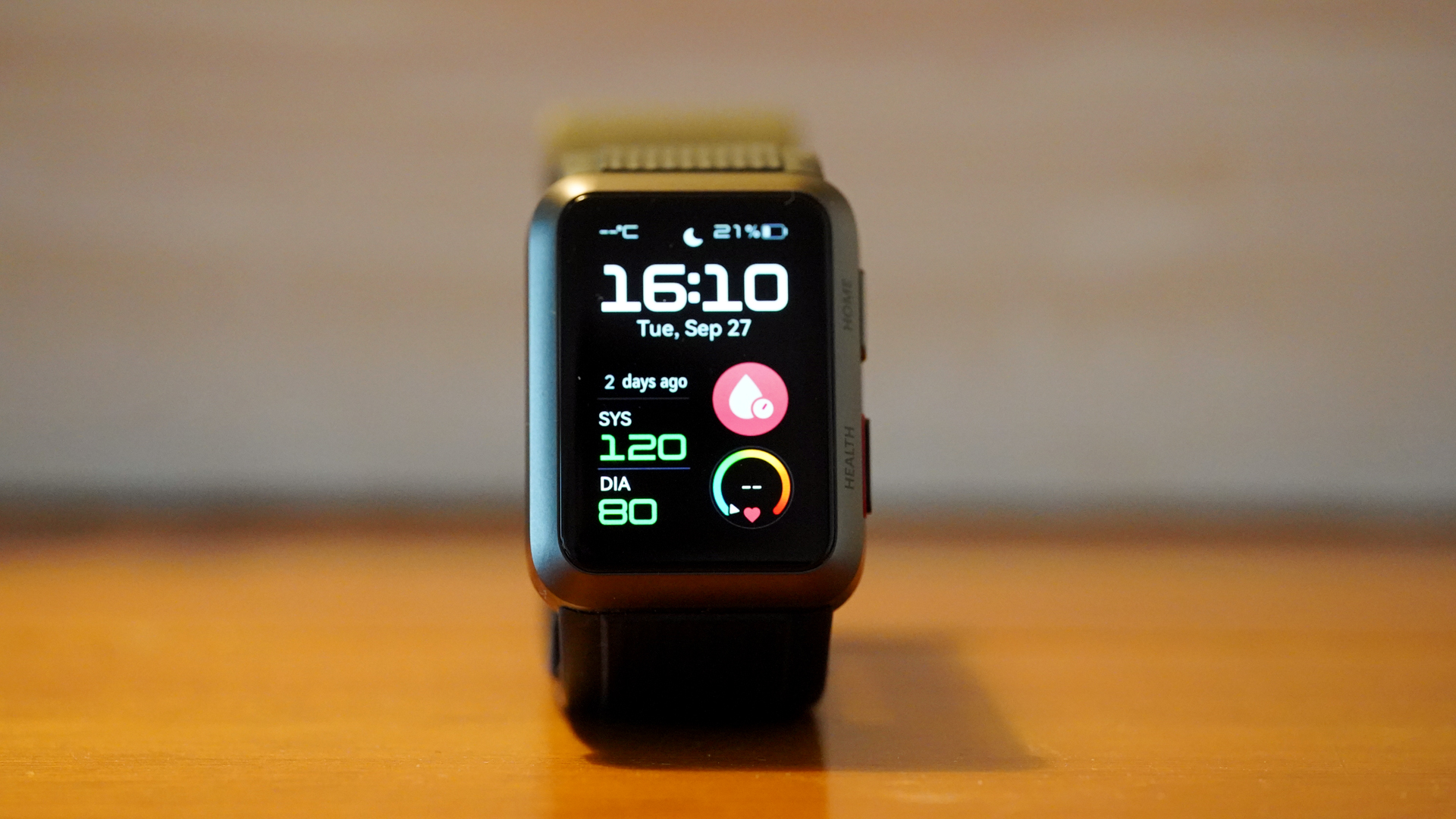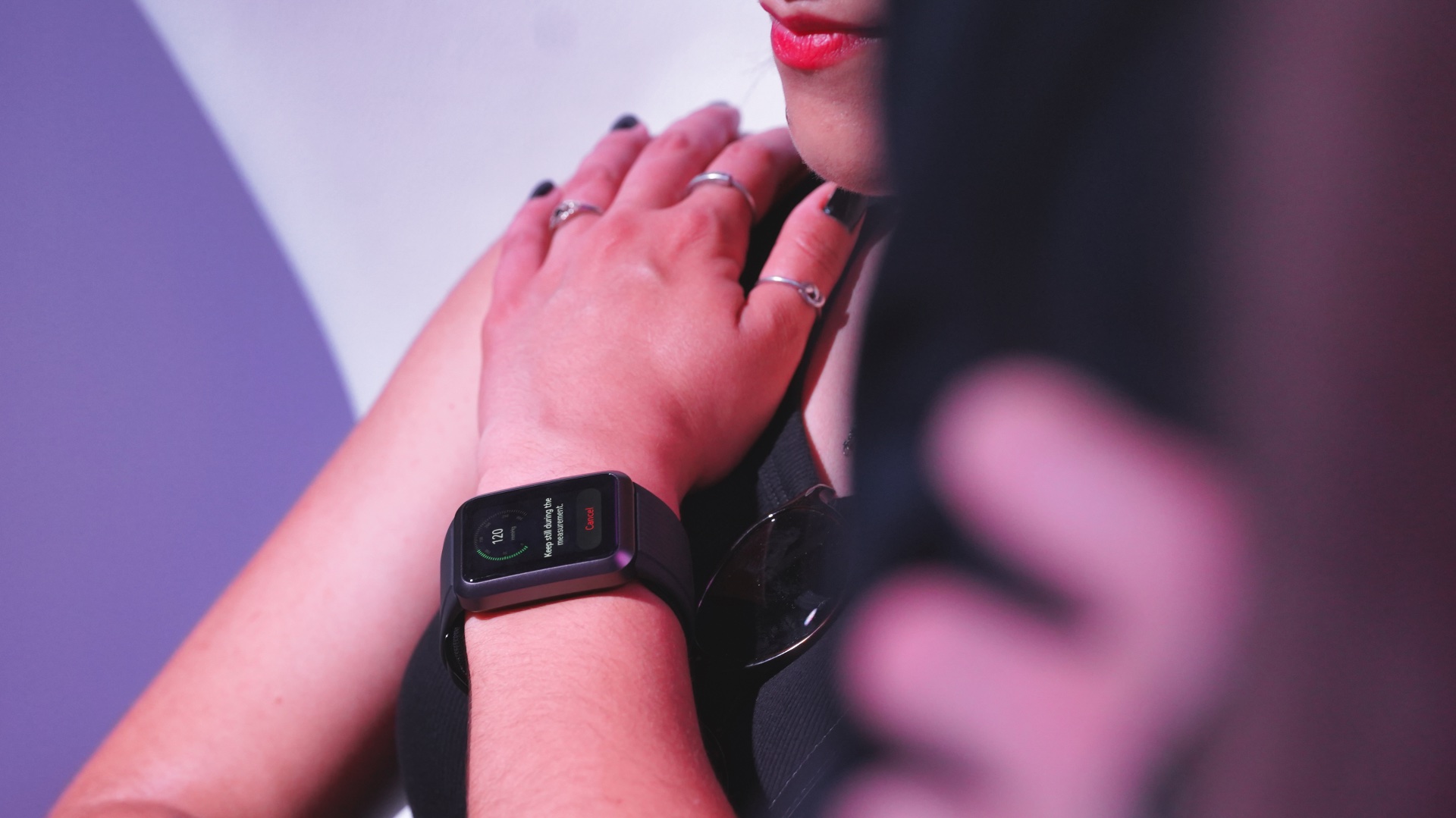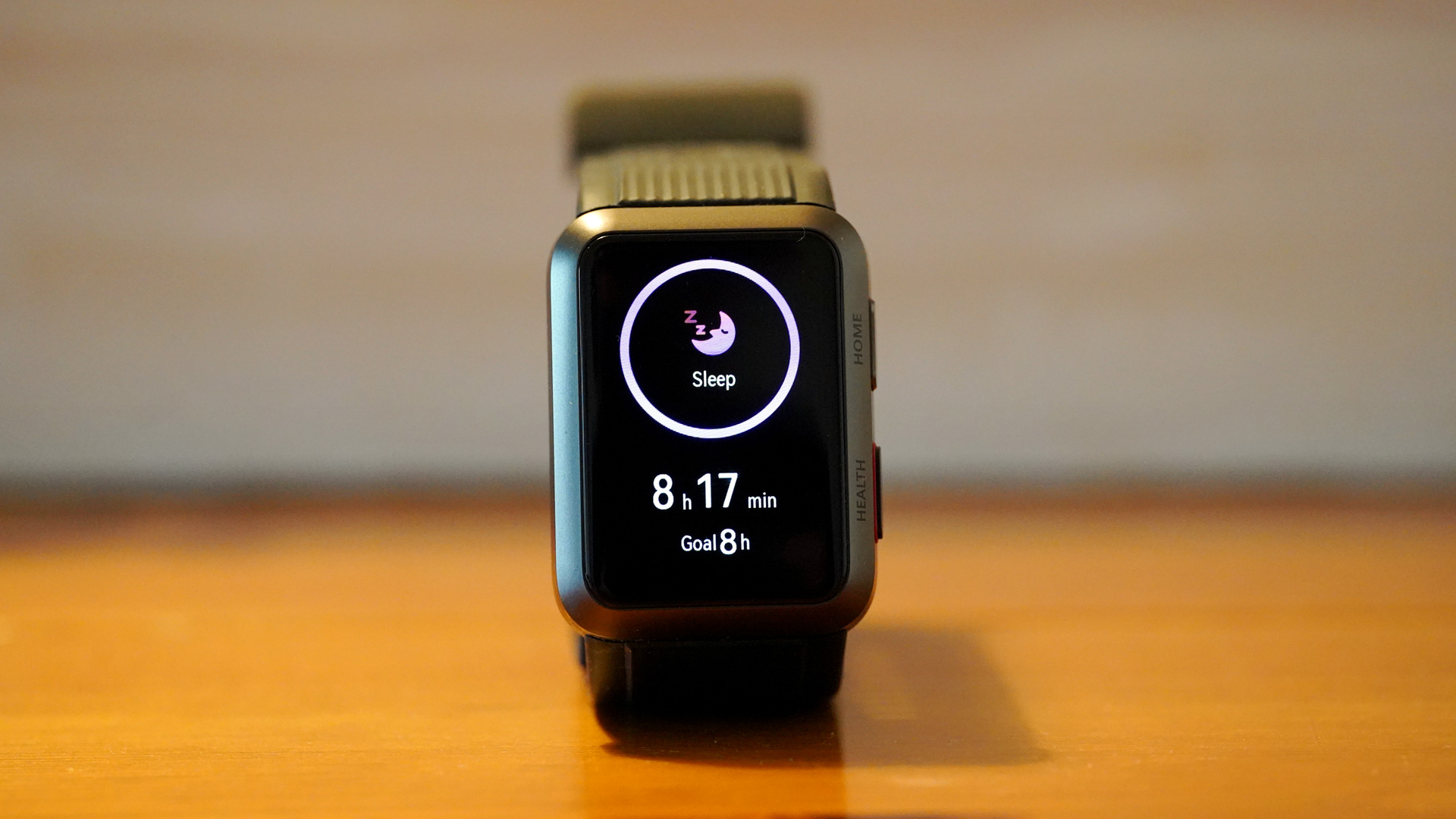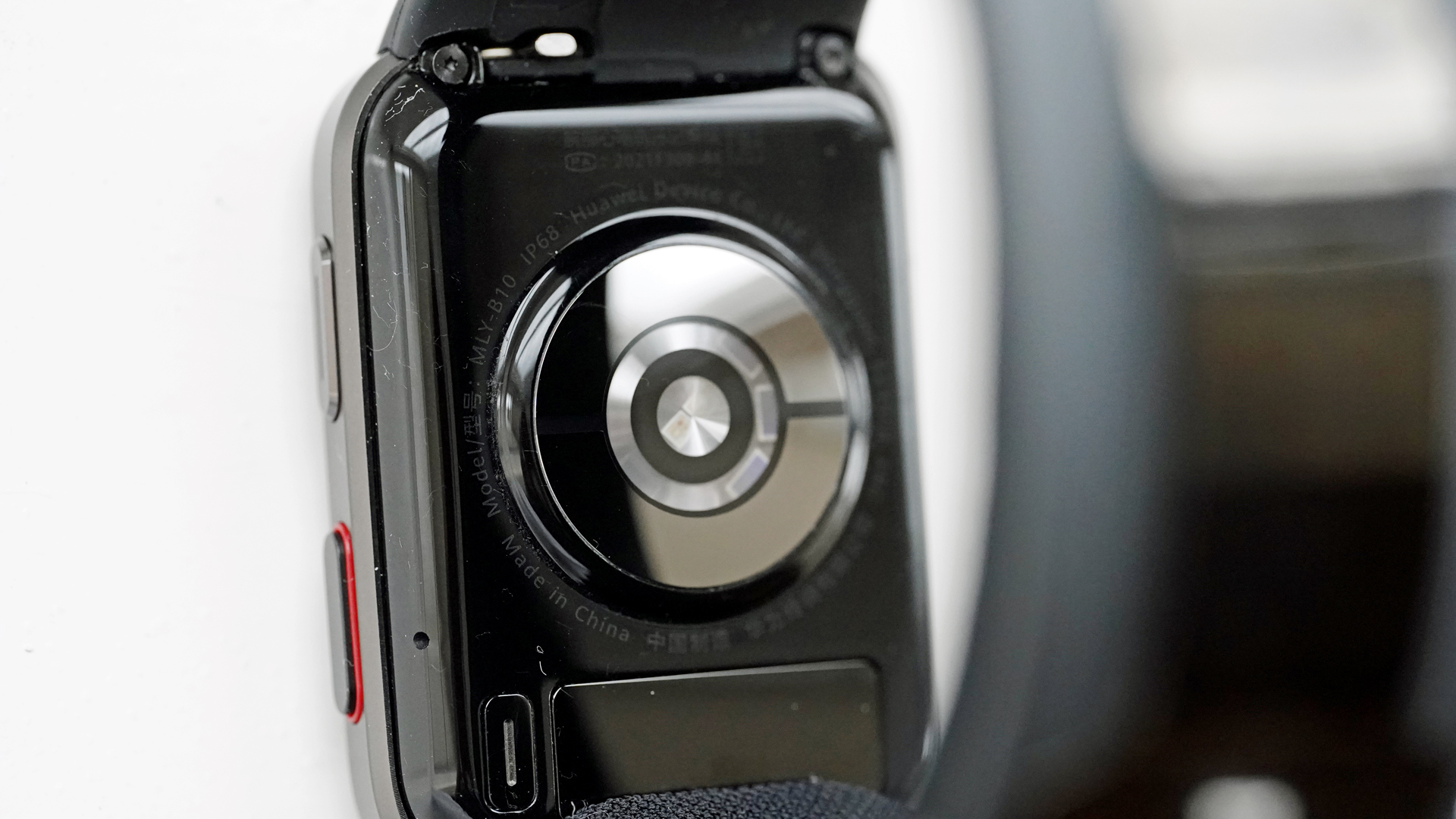Huawei Watch D review – Blood pressure monitoring smartwatch
The Huawei Watch D isn't just a one-trick pony


Considering the not-so-extreme asking price and the health features on offer, it's hard not to recommend the Huawei Watch D to anyone interested in monitoring their health stats on the wrist. Not to mention, it's also a pretty decent smartwatch.
-
+
Accurate heart rate sensor
-
+
Quick blood pressure readings
-
+
Has most (if not all) features of other Huawei smartwatches, incl. ECG
-
+
Spot-on GPS performance
-
-
Admittedly, a bit bulkier than most smartwatches
Why you can trust T3

I first saw (and tried) the Huawei Watch D at the House of Huawei event in Milan. I was intrigued by the concept of a smartwatch that can measure blood pressure right on the wrist – no external cuffs required! I was a bit cautious, though, as I wasn't sure what other features the Watch D would carry; I didn't like the idea of a 'blood pressure-only' smartwatch.
A quarter of a year later, I had an email about an early review sample of the watch, and I got excited all over again. My excitement only rose when I received the watch and managed to have a good look at it – it was bulky, sure, but felt premium in hand, and I instantly felt we'll have to include it in our best smartwatch guide. I took the watch with me for a week-long vacation in France, so I could spend some quality time with the Watch D. How did the Huawei Watch D fare during the trial period? Should you buy it when it becomes available? Read on to find out.
Huawei Watch D review – Price and availability
The Huawei Watch D was announced in May 2022 and will be available to buy from October 2022 in the UK directly from Huawei for a recommended retail price of £400 (approx $465/AU$711). The Watch D is available in two colours, Black and Off-White. US and AU prices and availability TBC.

Huawei Watch D review – Design and build quality
The Huawei Watch D has a large, 1.64-inch full-colour AMOLED touchscreen with a resolution of 456 x 280 pixels (PPI 326). Said screen is embedded in a comparatively large aluminium watch body measuring 51 x 38 x 13.6 mm. The bezel isn't small either, although you must appreciate that the mini pump housed in the case needs some space.
Before I first headed into the water wearing the Watch D, I thought I'd double-check the water-tightness of the watch body, just in case you shouldn't wear it for swimming. But to my surprise, the case is IP68 rated, despite the delicate sensors and the pumps and whatnot. In case you're unfamiliar with the ingress protection rating system, IP68 is the most water and dust-tight any product can get, meaning it's completely protected against dust and strong jets of water.
You'll find two buttons on the edge of the bezel, the one at the top being used for a range of actions while the bottom one is dedicated to blood pressure monitoring. The Watch D can be operated via touch, and touch operation is smooth and lag-free. As for sensors, there are many featured in the Watch D, including an accelerometer, gyroscope, optical heart rate sensor, ambient light sensor, temperature sensor, differential pressure sensor and a hall sensor.
The Huawei Watch D can be charged via Huawei's magnetic charger, the same one used with the Huawei Watch GT 3 Pro Ceramic Edition, so if you have one of those watches, you can use the same charger for both of them. As well as all the stuff mentioned above, the Watch D also has a built-in GPS chip, NFC and Bluetooth 5.1.
Get all the latest news, reviews, deals and buying guides on gorgeous tech, home and active products from the T3 experts
This bundle of electronics and sensors is wrapped around the wrist with the fluoroelastomer strap, which is the same material used in the premium Withings Scanwatch (and Scanwatch Horizon). On the longer part of the strap, you'll find the inflatable cuff, and the two parts of the strap are connected via a buckle, reminiscent of the TAG Heuer Connected Calibre E4.
The Huawei Watch D weighs approx. 41 grams and the strap is not interchangeable as it's attached to the inflatable cuff. The strap is also relatively wide at 30 mm.

Huawei Watch D review – Features
The main appeal of the Huawei Watch D is, of course, the blood pressure sensor and measurement, but it has more than just that one feature. For example, it's also capable of measuring ECG, SpO2 (blood oxygen), skin temperature, and more. It also tracks and evaluates heart rate, sleep, stress, steps, and all other stats you'd expect from the best fitness trackers nowadays.
You can also track workouts with the watch, and thanks to the built-in GPS chip, you can also use it for tracking runs/walks/cycles outdoors without your smartphone in tow. There is also a wallet function, so as long as you add a card in the Huawei Health app, you can use the Watch D to pay in the shops.
Other functions include alarm, timer, stopwatch, weather and smart notifications, music playback (no storage, though; it's only to control music on your phone) and breathing exercises. Plenty of bang for your buck, as you can tell, and although not all the features are revolutionary, I have not once felt I needed anything else on the watch, which, for the price, is pretty good.

Huawei Watch D review – Battery life
It's tricky to get an accurate picture of the battery life of any Huawei watch as the brand usually only provides us with 'typical' and 'heavy' usage stats. In my opinion, Huawei's typical usage is already pretty intense; it doesn't help gauge GPS battery life, though.
Anyway, the official battery life of the Watch D is 7 days (typical usage), as quoted by Huawei. That said, with a couple of tweaks, you can increase this significantly, even if you use GPS. As mentioned above, I took the watch on holiday and didn't pack the charger; I thought, 'if it dies, it dies', to quote Ivan Drago from Rocky IV. To give the watch a fighting chance, I turned on the Night Mode – which only turns the screen on if you press the button – and turned off SpO2 monitoring, something I find pointless anyway.
With these two tweaks, I managed to increase battery life to over 10 days, even though I used the GPS for over five hours during the week. As a matter of fact, after charging the watch 10 days ago, it still has 18% battery juice left. Better still, the GPS performance of the Watch D is on par with the Garmin Fenix 7X, the watch I wore on the other wrist while testing the Huwaei. Colour me impressed!

Huawei Watch D review – Health monitoring
But enough chit-chat about GPS performance; the Huawei Watch D isn't a triathlon watch, and you're probably here to learn more about the blood pressure and ECG features if I'm correct. And maybe about other health features, such as heart rate and sleep monitoring.
Blood pressure measurements on the Huawei Watch D work like a charm. When you first start using the watch, you have to adjust the strap, so it sits on your wrist properly – the watch and the app help you with that. I found the fit a bit loose, at least compared to other smartwatches. Once you figure out the correct strap position, though, the actual blood pressure measurements are easy to do.
All you need to do is sit down, press the button at the bottom, press 'measure' on the screen, and in five seconds, the measurement will start. To ensure readings are accurate, you must hold up your wrist (the one with the watch on) at around the level where your heart is and relax. Measurements take around 30 seconds, and the Watch D gives you the results straight away.
ECG readings are equally as easy to do, and thanks to the CE mark, you can rest assured they are somewhat accurate (otherwise, the Watch D wouldn't have received the certification). Needless to say, the Huawei Watch D isn't a medical device, so both blood pressure and ECG readings are to be taken with caution and not as gospel.

Sleep monitoring performance is excellent, just like on other Huawei watches and fitness trackers (see also: Huawei Watch Fit 2 review and Huawei Band 7 review); the Watch D tracks all sleep stages considerably accurately, thanks to the 2.5D optical heart rate sensor (it's under a curved glass, so it can 'see' your skin from different angles) and the algorithm that works out the specificities of your sleep patterns.
Stress and skin temperature tracking also seem okay, although the former is hard to judge, as I have no idea what it's based on. According to the Huawei Health app, the watch provides stress level evaluations based on HR fluctuation data and stress models, whatever the latter might mean. I'm not an anxious or stress person, and my stress readings were low, so from there I assume the Watch D evaluates low stress levels well.

Huawei Watch D review – Verdict
The Huawei Watch D is an excellent wearable with superb health functionality, accurate sensors and premium build quality. It's unique in the health smartwatch market thanks to the watch's blood pressure motor/mechanism and a slew of accurate features that provide users with a more accurate overview of their physical and mental well-being.
Of course, the watch can only monitor your vital signs but can't do the work for you. If the Watch D says your stress levels are high, you need to do something about lowering it. The same goes for all the other stats, including high blood pressure, poor sleep and activity levels. That said, by using the Huawei Watch D, at least you'll know about these – and knowing is half the battle. You can rest assured that Watch D will keep a keen eye on your ticker and tell you if something isn't quite right.
The Watch D feels good on the wrist – has a certain heft to it, in a good way – and can also be operated easily. The touchscreen works smoothly, and the display is bright and responsive enough not to raise stress levels unintentionally. Considering the not-so-extreme asking price and the health features on offer, it's hard not to recommend the Huawei Watch D to anyone interested in monitoring their health stats on the wrist. And it's a pretty decent smartwatch, too.
Huawei Watch D review – Also consider
The closest health watch experience to the Huawei Watch D is the Fitbit Sense 2. Fitbit's latest flagship health companion hasn't got ECG, but it can measure stress and ECG and track a variety of metrics, including sleep, steps, etc. It also recognises a few activities (e.g. running. walking) automatically with relatively high accuracy.
For a more sporty experience, check out the Huawei Watch GT Runner; it's the brand's first dedicated running smartwatch. The Watch GT Runner is essentially a lightweight version of the Huawei Watch GT 3, and although it doesn't offer quite as many features as Garmin or Polar watches, at least it has built-in GPS and a comparatively accurate optical heart rate sensor.

Matt Kollat is a journalist and content creator who works for T3.com and its magazine counterpart as an Active Editor. His areas of expertise include wearables, drones, fitness equipment, nutrition and outdoor gear. He joined T3 in 2019. His byline appears in several publications, including Techradar and Fit&Well, and more. Matt also collaborated with other content creators (e.g. Garage Gym Reviews) and judged many awards, such as the European Specialist Sports Nutrition Alliance's ESSNawards. When he isn't working out, running or cycling, you'll find him roaming the countryside and trying out new podcasting and content creation equipment.